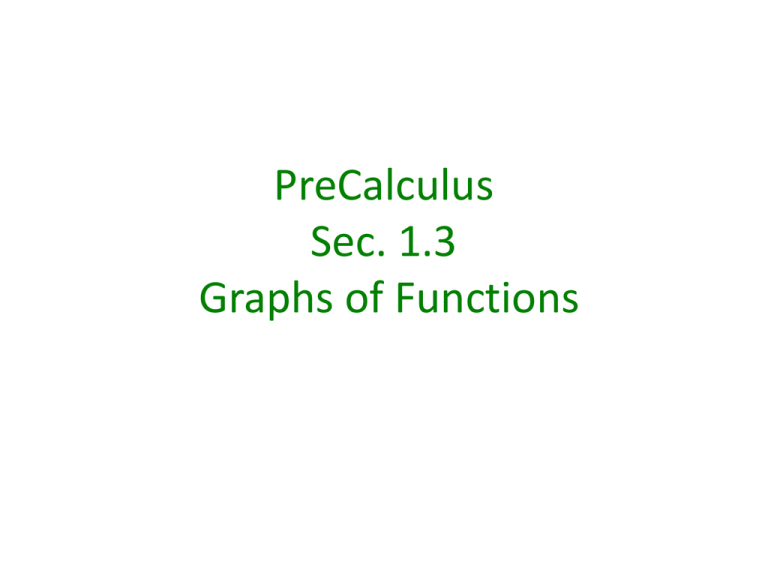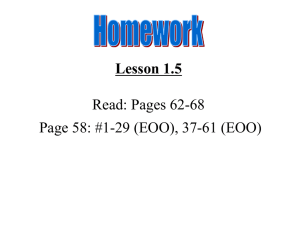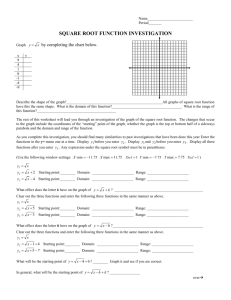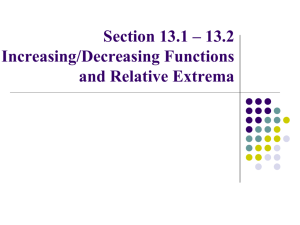2.4 Graphs of Functions
advertisement

PreCalculus Sec. 1.3 Graphs of Functions The Vertical Line Test for Functions • If any vertical line intersects a graph in more than one point, the graph does not define y as a function. Ex1. Use the vertical line test to identify graphs in which y is a function of x. a. b. y c. y x d. y x y x x Obtaining Information from a Graph • A closed dot: the graph stops at that point and the point ____________to the graph. • An open circle: the graph stops at that point and the point __________________________to the graph. • An arrow: the graph extends to ___________ with the same direction. (May not see with a graphing utility) • f(a): the ________________(value) where x = a on the graph. • Domain: all __________________from left to right. • Range: all ____________________from bottom to top. Use a graphing utility to graph the function and find its domain and range. Then find f(0). 1) f (x) 64 x f (0) 2 • Where does f(x) = 0: list the ____________________. • Where is f(x) ≥ 0: state the _____________where the graph ____________________the x-axis. • Increasing part: state the ______________where the graph ______________________. (excluding the endpoints) •Decreasing part: state the _____________where the graph ______________________. (excluding the endpoints) •Constant part: state the __________where the graph stays a ____________________. (excluding the endpoints) • Relative Maximum value: state the _____________of the vertex on the curve that is _____________________________________. Usually expressed as an ordered pair: (x, y). • Relative Minimum value: state the _____________of the vertex on the curve that is ___________________. Usually expressed as an ordered pair: (x, y). • Relative Maxima or Minima: the relative ______________________________. in plural form. 1. Find f (0). 2. What is the value of f at x = 1? What are the coordinates? 3. Where is f (x) 0 ? State the x - values, interval notation. 4. Relative Maximum value : 5. Relative Minimum value : 6. Where is the graph increasing? State the x - values, interval notation. 7. Where is the graph decreasing? State the x - values, interval notation. Use a graphing utility to graph the function and determine the intervals on which the function is increasing, decreasing, and constant. f (x) x 4 x 1 Increasing on: Constant on: Decreasing on: You can use the trace key and the left/right arrows if necessary. Use a graphing utility to graph the function and approximate any relative minimum or maximum values of the function. h(x) x 3x 10 3 2 Use the TRACE key for approximate. For actual: 1. Use the 2nd key, followed by the TRACE (CALC) key. 2. Choose 3: minimum or 4: maximum, 3. For Left bound, use the arrow to move the “blinking X” just to the left of the Minimum, ENTER. 4. Now repeat to the right for Right bound, ENTER. 5. Guess? ENTER Relative Minimum: Relative Maximum: Approximate: Approximate: Actual: Actual: Use the Graph to find the following: Relative Minimum: Decreasing: Increasing:




